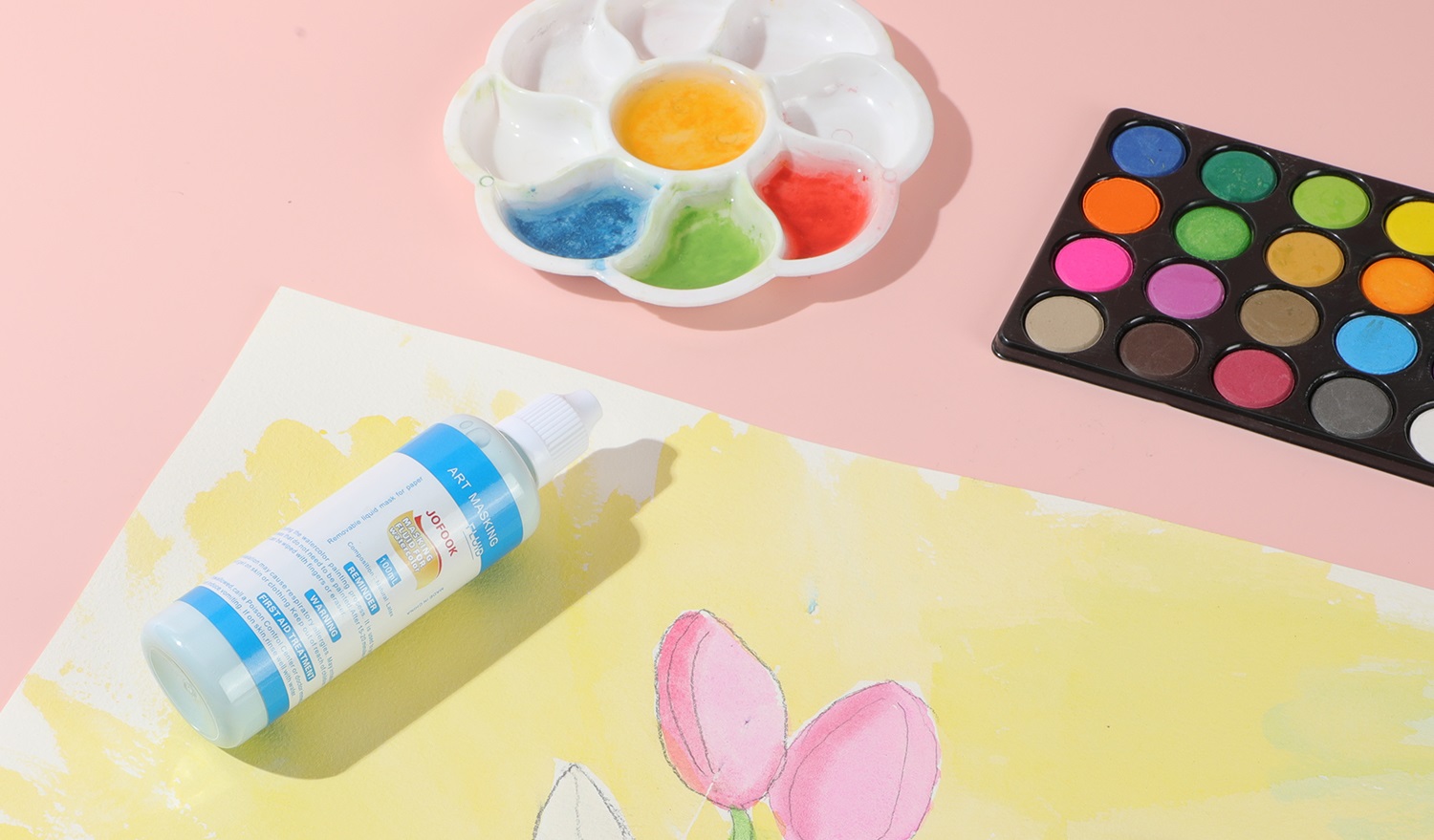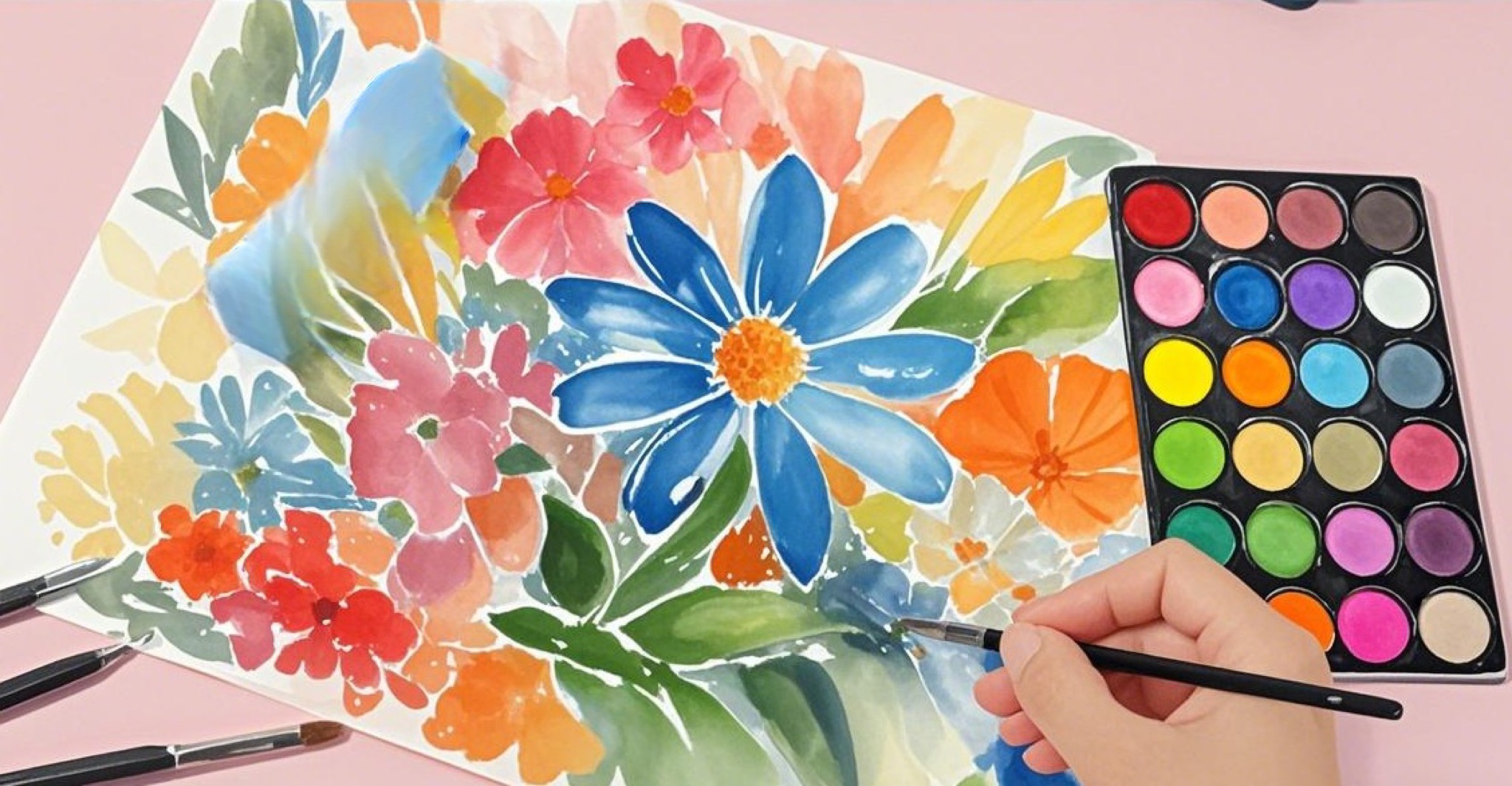In watercolor painting, masking fluid is an essential tool for preserving highlights and white spaces. However, improper use can lead to frustrating results. Below are six critical mistakes to avoid when working with this versatile yet temperamental medium.
Mistake 1: Applying Excessive Layers
Many artists apply masking fluid too thickly, mistakenly believing this ensures better coverage. Thick layers cause multiple issues: Extended drying time increases the risk of accidental smudging.Difficulty removing residue, leaving behind sticky marks that compromise color clarity.Uneven texture when peeling, damaging paper fibers. Proper technique: Use a brush to apply thin, even coats. The fluid should appear slightly translucent when dry.
Mistake 2: Misjudging Drying Time
Timing is critical: Rushing to paint over tacky fluid causes pigment contamination.Waiting too long makes removal harder, risking paper damage.
Test for dryness: Lightly tap the surface with your finger. If it feels dry and non-sticky, it’s ready. Under normal conditions, drying takes 15–30 minutes, but thickness and humidity may extend this.
Mistake 3: Improper Removal Techniques
Aggressive peeling or scraping can destroy your artwork: Tugging forcefully tears paper fibers.Using sharp tools leaves permanent scratches.
Safe removal method: Gently rub a rubber eraser (or kneaded eraser) from the edges inward. For stubborn areas, loosen the fluid first by lightly rolling the eraser over it.

Mistake 4: Skipping Pre-Testing
New masking fluid brands vary in adhesion, drying speed, and compatibility with paper.
Skipping tests risks: Chemical reactions with pigments.Paper damage during removal.
Always test: Apply the fluid to a scrap of your painting paper. Let it dry, paint over it, then remove it to observe its behavior.
Mistake 5: Poor Storage Practices
Improper storage ruins masking fluid’s consistency: Unsealed containers let air dry out the fluid, thickening it. Heat or sunlight exposure accelerates degradation.
Storage tips: Tighten lids immediately after use. Store in a cool, dark place. If thickened, add a few drops of water and mix thoroughly.

Mistake 6: Prolonged Application-to-Removal Time
Leaving masking fluid on paper beyond 48 hours causes:
Adhesive hardening: The fluid bonds with paper fibers, requiring risky scraping.
Stain penetration: On textured paper, residual haze appears after removal.
Discoloration: Aged fluid yellows, tainting transparent washes (e.g., grayish cloud edges).
Professional recommendations: Work within 24 hours (12 hours in humid climates).Segment complex projects: Complete one masked section at a time.
For overdue removal: Dab a cotton swab with masking fluid solvent, wait 30 seconds, then wipe gently.

By mastering these guidelines, you’ll harness masking fluid’s power without sacrificing your artwork’s integrity. Precision and patience transform this tricky medium into a trusted ally for luminous watercolor creations.
Before use, it is necessary to test the watercolor paper first to see if it will be damaged.Don’t let the Masking liquid stay on the paper for too long. If left on the paper for a long time without removing it, it may damage the paper surface.After use, cover the lid to ensure that the masking fluid can be used for a long time.
This was a great product to use for masking out light spaces for watercolor. Easy to remove when dry.